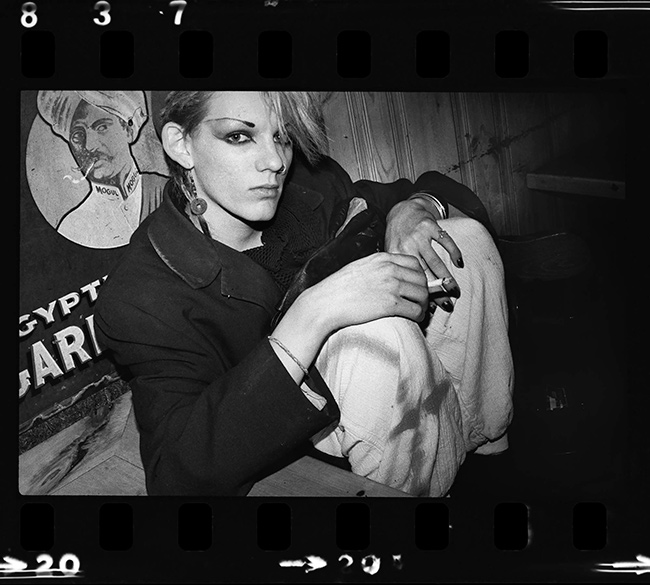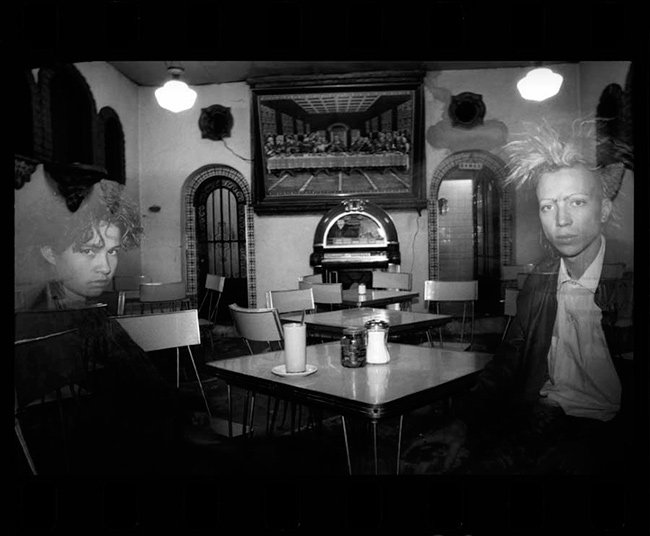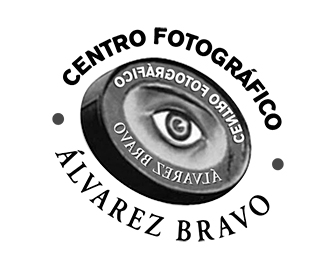THE ETERNAL RETURN OF JESUS AND THE MUTANTS
Rubén Ortiz Torres
Curatorship by Laurena Toledo
“Who were they? What the fuck were they doing? How did they sound, or what the fuck did they look like? If those were anarchists, I had to be one of them."
Ruben's relationship with punk subculture started when his friend Diego came back from a trip to England in 1978 and told him about a bunch of demented individuals who like to cut up their clothes, dye their hair green, barf, and badmouth the Queen. They were called punks, and they rejected authority. Soon after, Rubén would listen for the first time to the dissonant chords of the Sex Pistols, The Clash, and other bands who pioneered a sound that made him feel like he belonged to a generation that had left the musical nostalgia of the 1960s behind.
Later on he met Paco "El Vox" López Morán, an anarchist artist with a giant mohawk, eccentric clothes he designed himself, tattoos, abundant makeup, and a band called Jesus and the Mutants. This encounter prompted Rubén to photograph and film him in Super 8 format. His father's old Yashica camera produced high contrast black-and-white images that were grainy and poorly developed. He printed out the eight images required to participate in the 1984 Photography Biennial and won a production grant.
Unlike photojournalists who took an interest at the time in photographing chavos banda, or punks from marginalized areas, Rubén's images are self-representational: "in other words, my photos were not the result of nosy anthropological voyeurism, but rather of authentic exhibitionism."
Guillermo Santamarina, nicknamed the Tin Larín, who many years later would become a curator and artist, appears in these images, as do the brothers Juan Carlos and Mario Lafontaine, members of the legendary duet María Bonita, and the girls of Las Flores del Mal who wore vintage clothes from the 1950s and 60s. Rubén also photographed the stomping grounds of the underground scene, such as Disco Bar 9, a gay bar in the Zona Rosa of Mexico City or, further north, the one true punk bar of that era, the Tutti Frutti.
Some of the young Mexicans with leather jackets, sunglasses, spiky hair and pointy shoes who Rubén photographed were privileged enough to travel and import their style to Mexico. Rubén discovered that these pseudo-punks did not necessarily uphold the libertarian socialist ideals that at first had inclined him to join them. Instead, they were interested in keeping up to date on the latest musical trends and in some cases, the political gesture of affirming gay identities through fashion. Meanwhile, impoverished youths in the periphery of Mexico City –the Sex Panchitos from the zone surrounding Observatorio and Santa Fe, for example– opted for a punk-rocker aesthetic complemented with rigid, spasmodic dancing.
"Today's punk will never die!
Style is neither created nor destroyed, but transformed."
Text based on the writing of Rubén Ortiz: "MEXIPUNX", published in English in the book Punkademics. The Basement Show in the Ivory Tower. Edition by Zack Furness, Minor Compositions, 2012. Written by Adriana Chávez to accompany the selection exhibited under the title MEXIPUNX at the Centro Fotográfico Manuel Álvarez Bravo of Oaxaca in 2017.
Some of the images shown here were originally exhibited as part of the series Jesus and the Mutants at the Consejo Mexicano de Fotografía in 1984.
The present exhibition, THE ETERNAL RETURN OF JESUS AND THE MUTANTS, features my selection of Rubén Ortiz's work. I did this in the same spirit in which Rubén shot his photographs: parting from an inner circle, with the confidence friendship provides and the respect merited by his work and the moment it was made. This is a selection without too many conceptual foundations. Rather, it came together intuitively, as a survey replete with affective associations that lends importance to the aesthetics at the time. One that tries not to be overly sentimental about a moment in this defective city's art history, music, and photography. I have known Rubén a long time, and I have always admired his sense of humor and his talent for creating cultural hybrids with myriad references. Punk is precisely that: taking a little from here, pulling something from there because it suits us, and enough said. Whoever wants to change the world had better get a move on.
Laureana Toledo, Guest Curator
Tlalpan, 2021
Until february 13th, 2022
Laureana Toledo. Artista visual autodidacta. Su trabajo explora las relaciones entre distintos medios y lenguajes visuales, así como la asimilación de la cultura popular. Ha expuesto de manera individual y colectiva en espacios como Eastside Projects, en Briminghan; Whitechapel Gallery, en Londres; Museo de Arte Moderno, en la Ciudad de México; y RedCat, en Los Ángeles, entre otros. Ha gestado proyectos como curadora y en colaboración con Francis Alys, David Byrne y Lourdes Grobet. Participó en la escena artística y rockera de los años ochenta en México y otros países.

Fumadores (Toronto, Canadá, 1984-2011 AP). Plata sobre gelatina entonada al selenio, 2017. Colección del artista.

María Bonita (Ciudad de México, ca. 1985). Plata sobre gelatina entonada al selenio, 2017. Colección del artista.

La última cena (Ciudad de México, 1984). Plata sobre gelatina entonada al selenio, 2017. Colección del artista.






